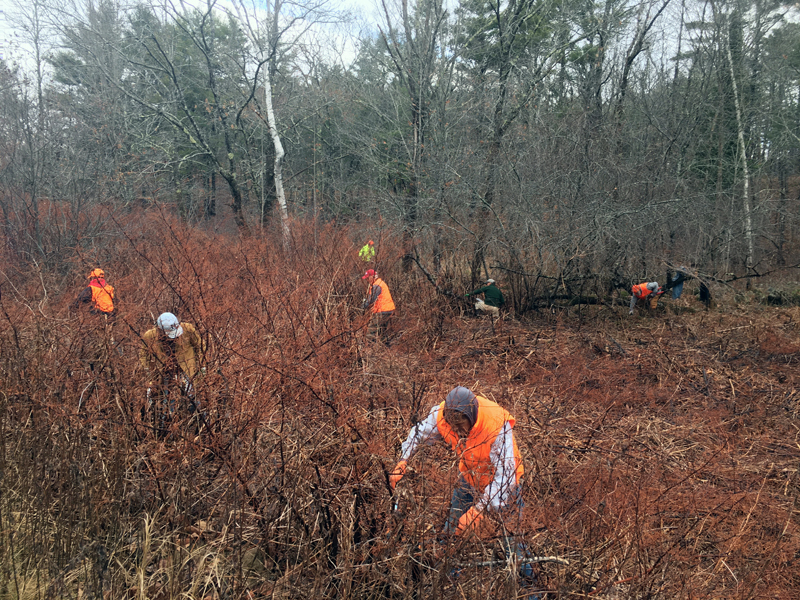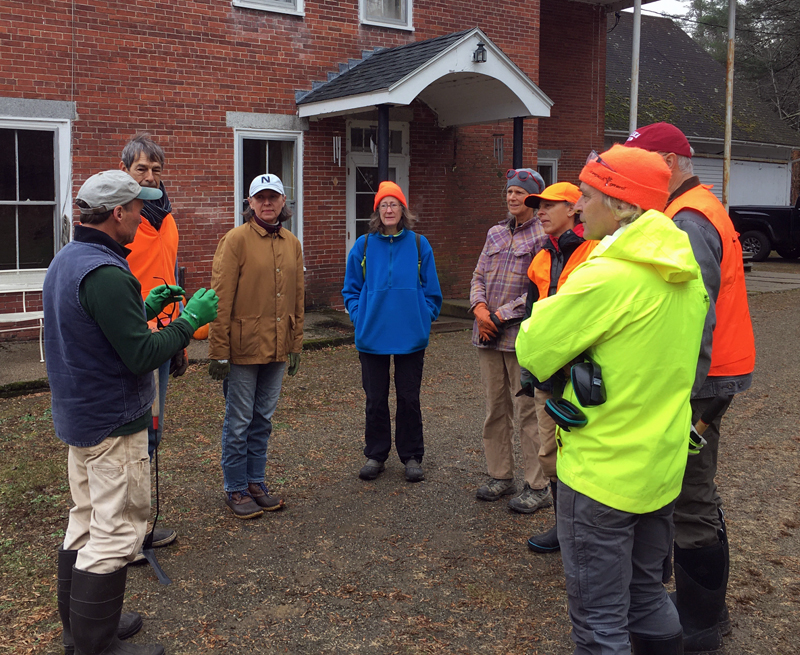
Volunteers chop dead knotweed canes on a riverfront property in Kings Mills, Whitefield. According to the Sheepscot Knotweed Project, now is the time to prepare to battle next summer’s Japanese Knotweed infestation. (Photo courtesy Kristin Stone)
It’s the perfect time to prepare for next summer by implementing a Japanese Knotweed control that actually works: cutting the dead, woody canes now.
Chopping and laying this material down to compost in place makes for an easy-to-navigate spring and summer work environment. It will be much easier to cut next year’s tender spring growth without climbing through the dense brittle thicket of this season’s dead canes.
Last week, the Sheepscot Knotweed Project helped Tanya and Andre Rachkovsky get a start on their riverside stand in Kings Mills, Whitefield. Eight volunteers with brush cutters, loppers, clippers, shears, and machetes cut back dead canes on approximately 550 linear feet of riverfront knotweed. Knotweed infestations on the river are displacing native plant communities and threatening the animals that live in or depend on those communities.
The Sheepscot Knotweed Project and its band of volunteers will continue work with the Rachkovskys and three other riverfront property owners through next season. With many hands and this shared community effort, the knotweed-on-the-river problem can be tackled in a way that is simply not possible alone.

Carl Solberg organizes Sheepscot Knotweed Project volunteers. (Photo courtesy Kristin Stone)
Each designated stand will get cut 5-6 times in 2023. The key to knocking back knotweed is to continuously cut it before it reaches six feet in height and preferably any time it reaches three to four feet. At six feet, the plants become a “photosynthetic factory” restoring and building the health of its rhizomes.
Repeated cutting weakens the health of the plant. By September, it will be more effectively treatable.
Volunteering for a couple hours of cutting is a great way to learn more about what to do with a patch/problem. Anyone interested in helping chop, cut, stomp, and improve native habitat on the river next summer, or who is looking for more information on future events, please email sheepscotknotweedproject@gmail.com.



